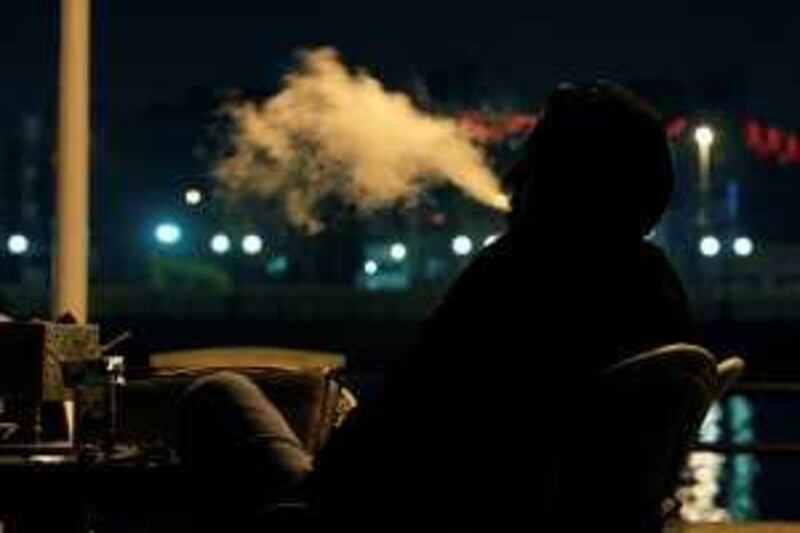Shisha, water pipe, arghile, narghile, goza, hubble bubble, hookah different names but the same harm and, now, global reach. Would you enter a room if someone told you that you would be breathing a cocktail of carbon monoxide, polyhydrocarbons, formaldehyde, nitrogen, nitric acid, arsenic, chromium, lead and volatile aldehydes? If you smoke water pipes or breathe smoke emitted by others smoking water pipe tobacco in your proximity, these are exactly the kinds of toxicants that you are inhaling in varying amounts and degrees. And these are only the toxicants we know of; there are many more to be identified. Water-pipe smoke, which also delivers nicotine, a highly addictive substance, is not a safe alternative to cigarette smoking.
The American University of Beirut's Tobacco Control Research Group pioneered experiments with smoke-delivery machines that tested toxicant yield in lab environments. All of the toxicants mentioned above were found. In a typical one-hour water-pipe session, the smoker inhales 100 to 200 times the volume of smoke he would from a single cigarette, and receives as much tar as he would from an entire pack.
Not surprisingly, evidence suggests that water pipe smokers are subject to health risks similar to those faced by cigarette smokers, including cancer, heart disease and respiratory disease. Sharing water pipes, which is a common practice, also puts people at risk of contracting communicable diseases, such as tuberculosis. Recently, experts in infectious diseases have warned water pipe users that they also risk transmission of flu-related viruses.
The prevalence of water-pipe tobacco smoking is increasing in the Middle East region, the US, Europe and worldwide; it is particularly on the rise among young people. An alarming number of pregnant women continue to smoke, perhaps unaware of health consequences that can include lower-weight babies with higher risk of respiratory diseases. A regional study asked water-pipe smokers and non-smokers of all ages in Lebanon, Syria, the Palestinian territories and Egypt why they thought water-pipe smoking was becoming increasingly popular. Many cited availability, accessibility, affordability, innovations in flavouring and design and the lack of a regulatory framework at the national level, an allusion to bans on smoking in public places.
The World Health Organisation's Framework Convention on Tobacco Control, in force since 2005 and the first international health treaty, obliges ratifying countries to implement evidence-based tobacco control policies that target all forms of tobacco use. One such policy is banning smoking in closed public places. Another is having large health warning labels. For example, all water pipe tobacco products and related accessories, such as the hose and filters, need to have a large and pictorial health warning label similar to those imposed on other tobacco products, such as cigarettes.
The risks of smoking from water pipes are severe but largely unknown. Why is it that water pipes continue to be largely unregulated despite what we know to date? We need to act now to educate consumers and to encourage governments to regulate the industry. Dr Rima Nakkash is assistant research professor of health behaviour and education at the American University of Beirut. She addresses the conference on Wednesday.






